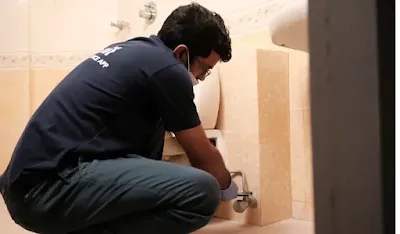Is Your Home at Risk for Plumbing Backflow Issues?
Is Your Home at Risk for Plumbing Backflow Issues?
Most homeowners don’t think much about the water from their taps—until something goes wrong. One of the most serious and often ignored plumbing problems is backflow. This happens when dirty water flows backward and enters your clean water supply. It can create significant health risks and lead to expensive plumbing repairs if not found early.
If you’ve ever looked for plumbers near me due to strange water pressure, color changes, or unusual smells from your faucets, backflow might be the hidden cause. Knowing what leads to it and how to stop it can help keep your home and family safe.
What is Backflow?
Backflow takes place when the normal flow of water in your plumbing system changes direction. Instead of going out to drains or fixtures, water is pulled or pushed back into your clean water supply line, often bringing in pollutants or waste.
This can happen due to two situations:
- Back-siphonage: When there’s a sudden drop in water pressure (like during a main break or firefighting), it pulls water back into the supply.
- Back-pressure: When a plumbing system has higher pressure than the water supply system, it pushes water in the wrong direction.
What Are the Common Causes of Backflow?
Several common plumbing setups can increase the risk of backflow. These include:
- Garden hoses connected to outdoor taps (especially if left in puddles or buckets)
- Broken irrigation systems
- Poorly installed dishwashers or washing machines
- Boilers and heating systems without proper check valves
- Submerged faucets or open taps near dirty sources
Even something as simple as using a garden sprayer with pesticides without a backflow preventer can harm your water supply.
Signs Your Home Might Be at Risk
Backflow isn’t always easy to notice at first. However, here are some signs to look out for:
- Strange smell or taste in your tap water
- Discolored water (brown, yellow, or cloudy)
- Water that suddenly changes pressure
- Bubbling or gurgling sounds in your plumbing
- Frequent drain backups or clogs
If you notice any of these signs, looking for “plumbers near me” is the right step. Backflow is not something you should try to fix yourself.
How to Prevent Plumbing Backflow
The good news is that backflow can be prevented. Here are a few important actions you can take:
1. Install a Backflow Preventer
This is a device that stops water from reversing in your pipes. It’s necessary if you have irrigation systems, pools, or wells.
2. Schedule Regular Plumbing Inspections
A licensed plumber can examine your system for weaknesses and ensure your backflow preventer is working well.
3. Don’t Submerge Hoses or Faucets
Keep garden hoses and faucet ends clear of puddles, tanks, and drains to stop dirty water from accidentally being pulled back.
4. Maintain Proper Pressure Levels
Make sure your home has steady water pressure. Sudden drops can cause back-siphonage, especially in older systems.
When to Call a Professional
Backflow problems are not only complicated but can also be dangerous. A licensed plumber is skilled at identifying the problem and installing or fixing the right backflow prevention systems. If you’re unsure or if your house is old and hasn’t had a plumbing check in years, it’s time to reach out to the professionals.
Conclusion
When it comes to keeping your family’s water safe, don’t take risks. Whether you suspect backflow or just want to avoid future issues, Fixail is here to assist.
Our team of skilled workers provides quick responses, advanced detection tools, and certified installation of backflow prevention systems. With Fixail, you get more than just a solution—you get peace of mind and expert service.




Comments
Post a Comment